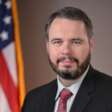CX Exchange 2023: FDA’s Josh Lehman on how his agency’s not so different from Zappos — employees come first
The agency implemented kiosks with virtual technicians to accelerate IT help desk services. FDA’s Josh Lehman explains how that initiative is an example of the...
On the surface, the Food and Drug Administration’s Office of Digital Transformation doesn’t have a lot in common with Zappos, the online shoe and houseware retailer.
Zappos is a billion-dollar internet darling that Amazon bought in 2010. FDA is a government agency. Enough said.
But dig a little deeper and the two organizations have more in common than one might think.
Both Zappos and FDA’s customer bases are wide and varied. And, maybe more important, both believe happy employees equals satisfied customers.
“We are focused on making sure our internal employees have what they need,” said Josh Lehman, director of business and customer assurance at FDA. “We have this framework mapped out. It’s the Zappos model, focused on employees having what they need to provide exceptional service for external customers.”
A big focus of making sure employees have what they need is the move to provide enterprise capabilities through an agile and iterative approach, Lehman said during the Federal News Network 2023 CX Exchange.
FDA has adopted a wave planning methodology that relies on constant communication and feedback so there isn’t the stopping and starting that plagued previous IT modernization efforts, he said. In one example, FDA delivered a key capability to its employees in eight months instead of the three or four years it normally would’ve taken, he said.
“Too often, you would have projects that would not necessarily be able to get in front of our leadership and hear direct feedback on how the project is affecting them. And without that direct feedback, the projects struggled,” Lehman said. “Now, it’s just amazing to see people walking away and seeing how people get excited about the project and how they are making an impact. You have that from the IT side, but then it also gives us that ability to let people know on the business side or on the congressional side that we will have something done by next week or whenever. Because we have that dialogue, we can essentially say, ‘Hey, well, if this feature will help you out, we will push you up front,’ or ‘If it’s going to be disruptive, we’ll move it later.’ ”
FDA’s own ‘Genius Bar’ of sorts
The IT help desk kiosk initiative offers a good example of how the wave planning methodology can let the agency develop better services faster.
FDA implemented a virtual help desk at kiosks located throughout agency facilities to make it easier for employees to obtain IT support when it best suited them, Lehman said.
He equated the kiosk concept to the Apple Genius Bar. The virtual help desk available at each kiosk filters based on the user’s input to determine what type of troubleshooting and support is needed.
“Through the kiosks, you can hand over your device, and they’re able to kind of fix things much faster than in any of those other support models. One of the things that we partnered with our vendor on is getting a virtual kiosk that allows the ability to actually walk up with your device and have a virtual technician right there do a diagnostic capability on that computer,” Lehman said. “It gives us the ability to distribute that capability across a lot more locations and then still be able to support very similar capabilities that lead to faster resolution times for those support areas than we had previously.”
Each kiosk is set up with multiple cables for laptops, smartphones and other devices, and then a technician can remote directly into the device to figure out what is the problem.
One big benefit of the approach is employees have more flexibility to take care of their problems when their day allows, Lehman said. In the future, the agency plans to add a feature that lets employees know if there is a wait to use the kiosk, and then they can decide to wait or come back later.
Next up, more IT help self-service tools
The challenge of scheduling help desk appointments became less cumbersome, and more employees started using the virtual help desk than the regular one.
“The other aspect that we were anticipating, even with the virtual kiosk, if there is some type of update that might be much more manual, we’re trying to get away from those. But they still exist now,” he said. “This would be something that we might be able to deploy on a larger scale. So if you needed to get an update, you would be able to just walk up and get that service immediately, rather than waiting. It also allows some scalability that we don’t necessarily have with the service that people tend to enjoy.”
The Office of Digital Transformation plans to expand virtual help desk services in the coming months, starting with a chat capability. Lehman said it will give users the ability to start supporting themselves more.
“What we expect in the near future is for a user to be able to actually chat something and say, ‘Hey, I need this software.’ And for the chatbot to run through the process and push that software to the user,” he said. “Rather than needing to go to the kiosk, what we want to try to do is make sure that people are aware of the various capabilities and support channels and push them to the one that’s going to service them the best that they have available to them.”
The goal of all the virtual help desk capabilities is to accelerate support, address demand in more efficient ways and keep employees satisfied, Lehman said.
An omnichannel experience
Lehman said a big part of the challenge is education, not just with the virtual kiosk but all the multiple channels that are available for support.
“One of the things that’s really interesting is as we measure those various support channels and their capabilities, the idea is if you are calling and it takes 30 minutes to fix a camera issue, and the kiosks are able to do that in say 5 minutes, how do we get the call down to 10? So one of the big things throughout all of these, is how do we level that off and just figure out what is actually working to provide that overall experience?” he said “In the future, what we’re really looking for are those virtual services to really kick in and start to help users to do more of what we’ll call like a Tier 0 or maybe Tier 0.5.”
One critical element? Improving the feedback loop — no matter the approach, whether virtual, kiosk, chat, phone or in person. That’s the only way for the IT help desk team to know if problems are being quickly and effectively solved, and where to make improvements, he noted.
“Maybe six months ago, we started integrating that user experience framework to any enterprise project. Previously, it was only with select items that we really needed to enhance our collaboration capabilities on and for specific objectives that were for the enterprise,” Lehman said. “Now, we’ve learned enough that what we want to do is make sure that anything that’s going out there starts to fall into this framework. We want to embrace those concepts and make sure that folks have that same communications model and feedback loop that can be used for any enterprise initiative.”
To read or watch other sessions on demand, go to our 2023 CX Exchange event page.
Copyright © 2025 Federal News Network. All rights reserved. This website is not intended for users located within the European Economic Area.
Related Stories
Featured speakers
-

Josh Lehman
Director of the Office of Business and Customer Assurance, Food and Drug Administration
-

Jason Miller
Executive Editor, Federal News Network
Upcoming Events
Related Stories
Top Stories

Josh Lehman
Director of the Office of Business and Customer Assurance, Food and Drug Administration
Joshua Lehman, PMP, is the Director, Office of Business and Customer Assurance (OBCA) and the Division of Business Partnership and Support (DBPS) in the Office of Information Management and Technology (OIMT) at the Food and Drug Administration. He is responsible for the Agency’s collaboration services, FDA.gov, operational support, and end user IT equipment. Mr. Lehman is also the sponsor of FDA’s User Experience Project Portfolio, which consists of 20+ information technology modernization projects to improve the day-to-day IT collaboration end user experience in a heightened telework environment.
With over 23 years of extensive IT experience, Mr. Lehman excels in managing and developing information technology program solutions, project management, search engine optimization, web development as well as personnel management and mentoring.

Jason Miller
Executive Editor, Federal News Network
Jason Miller has been executive editor of Federal News Network since 2008. Jason directs the news coverage on all federal issues. He has also produced several news series – among them on whistleblower retaliation at the SBA, the overall impact of President Obama’s first term, cross-agency priority goals, shared services and procurement reform.






